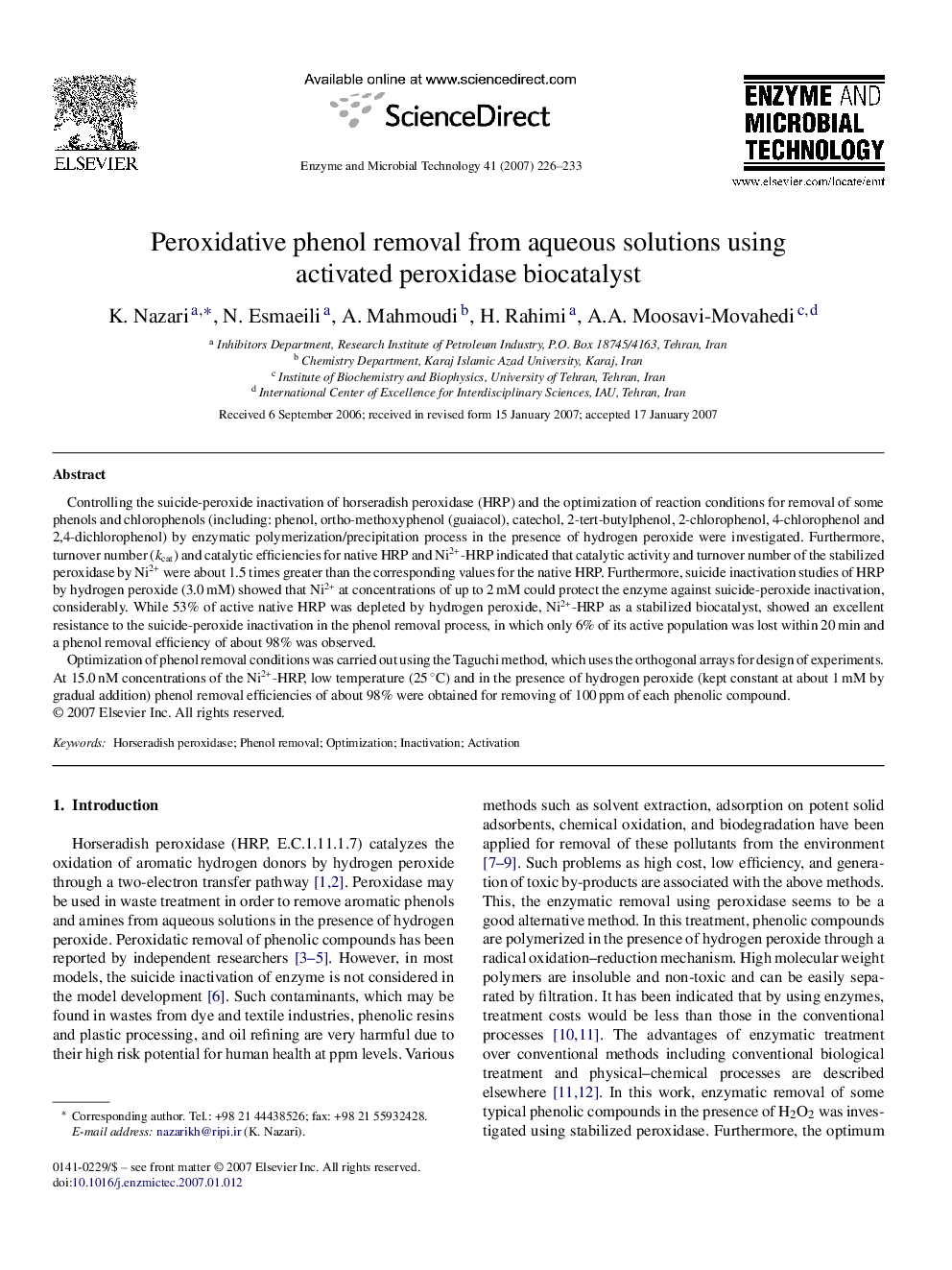| Article ID | Journal | Published Year | Pages | File Type |
|---|---|---|---|---|
| 18714 | Enzyme and Microbial Technology | 2007 | 8 Pages |
Controlling the suicide-peroxide inactivation of horseradish peroxidase (HRP) and the optimization of reaction conditions for removal of some phenols and chlorophenols (including: phenol, ortho-methoxyphenol (guaiacol), catechol, 2-tert-butylphenol, 2-chlorophenol, 4-chlorophenol and 2,4-dichlorophenol) by enzymatic polymerization/precipitation process in the presence of hydrogen peroxide were investigated. Furthermore, turnover number (kcat) and catalytic efficiencies for native HRP and Ni2+-HRP indicated that catalytic activity and turnover number of the stabilized peroxidase by Ni2+ were about 1.5 times greater than the corresponding values for the native HRP. Furthermore, suicide inactivation studies of HRP by hydrogen peroxide (3.0 mM) showed that Ni2+ at concentrations of up to 2 mM could protect the enzyme against suicide-peroxide inactivation, considerably. While 53% of active native HRP was depleted by hydrogen peroxide, Ni2+-HRP as a stabilized biocatalyst, showed an excellent resistance to the suicide-peroxide inactivation in the phenol removal process, in which only 6% of its active population was lost within 20 min and a phenol removal efficiency of about 98% was observed.Optimization of phenol removal conditions was carried out using the Taguchi method, which uses the orthogonal arrays for design of experiments. At 15.0 nM concentrations of the Ni2+-HRP, low temperature (25 °C) and in the presence of hydrogen peroxide (kept constant at about 1 mM by gradual addition) phenol removal efficiencies of about 98% were obtained for removing of 100 ppm of each phenolic compound.
